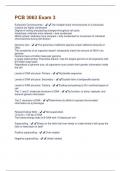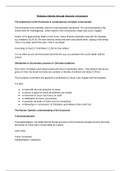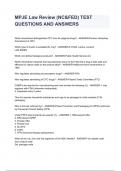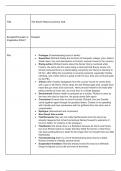Tentamen (uitwerkingen)
PCB 3063 Exam 3 Questions And Answers Latest Updates
- Vak
- Instelling
Eukaryotic Chromosomes - ️️The multiple linear chromosomes in a eukaryotic nucleus are highly condensed Degree of coiling and packing changes throughout cell cycle Interphase: relatively more relaxed = less condensed Mitotic phase: relatively more compact = fully condensed for movement of i...
[Meer zien]







